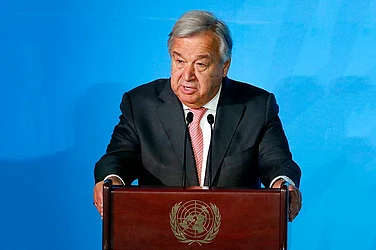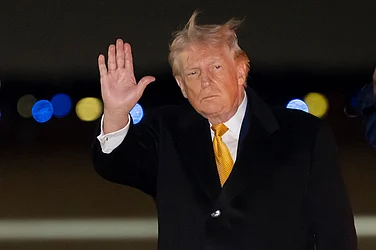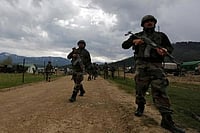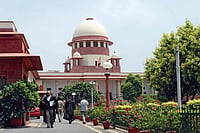Prime Minister Narendra Modi, currently on a two-day visit to Abu Dhabi, is set to inaugurate the first Hindu stone temple today.
The Bochasanwasi Shri Akshar Purushottam Swaminarayan Sanstha (BAPS) Mandir, represents a socio-spiritual Hindu faith deeply rooted in the Vedas. It was pioneered by Bhagwan Swaminarayan in the late 18th century and formally established in 1907 by Shastriji Maharaj.
The proposal for the construction of the Hindu temple in Abu Dhabi was initiated during PM Modi's first visit to the UAE in 2015, after which the government allocated land for the BAPS temple.
Also, the consecration ceremony of the temple was conducted ahead of its formal inauguration by Prime Minister Narendra Modi later today.
Expressing gratitude, PM Modi thanked UAE President Sheikh Mohamed bin Zayed Al Nahyan on Tuesday for his support and for granting the land for the construction of the Hindu temple. Modi emphasized that the BAPS temple in Abu Dhabi symbolizes the President's strong affinity towards India and his vision for a prosperous future for the UAE.
About The BAPS Hindu Mandir
Spanning across 27 acres of land in Abu Dhabi, the BAPS Hindu Mandir is situated in Abu Mureikhah, near Al Rahba, along the Dubai-Abu Dhabi Sheikh Zayed Highway. Construction of the temple has been underway since 2019, with a absence of steel or concrete. Instead, traditional stone architecture has been employed in its construction.
The temple complex boasts seven pinnacles, symbolizing the seven emirates of the UAE, and includes facilities such as a visitors’ center, library, classroom, prayer room, community center, amphitheater, playground, garden, as well as books and gift shops, along with a food court.
The temple's construction involved contributions from various regions of India, including the renowned pink sandstone from Rajasthan and sacred waters from the Ganga and Yamuna rivers. More than 700 containers were used to transport the sandstone slabs from Rajasthan to Abu Dhabi for the temple's construction.
'Symbol of Spiritualism': Says Indian diaspora
Furthermore, reactions from members of the Indian diaspora have been notable. One member expressed, "It's a great feeling because as human beings we need our spiritual side to be covered and temple for all reason is a symbol of spiritualism... So, it gives you a feeling of stability."
Meanwhile, others remarked it as a good manifestation of spirituality.
Scheduled to open its doors to the general public on February 18, the BAPS Hindu Mandir will stand as the largest Hindu temple in the entire Gulf region. Prior to its construction, the UAE housed three other Hindu temples, all located in Dubai.
PM Modi At the World Government Summit In Dubai
During his address at the World Governments Summit in Dubai, Prime Minister Modi highlighted India's vigorous efforts against corruption and the underground economy, emphasizing the enhancement of transparency in governance.
He said, "Over the last few years, people's trust has increased over the Indian government. People have trust over the intent and commitment of the Indian government. This was possible only because we prioritised public sentiments in governance,"
"We have focused on women-led development. We are strengthening the financial, social and political conditions of the Indian women. We have also given reservations to women in the Parliament. We are also creating new opportunities for youth and focusing on their skill development. Soon, India will have the third biggest startup ecosystem (of the world)," he further mentioned.
PM Modi also articulated his belief in minimal government intervention in citizens' lives, advocating for a governance model characterized by "Minimum government, maximum governance."
He further added, " I have always emphasised creating an environment in which a sense of enterprise and energy in the citizens grows..."


























